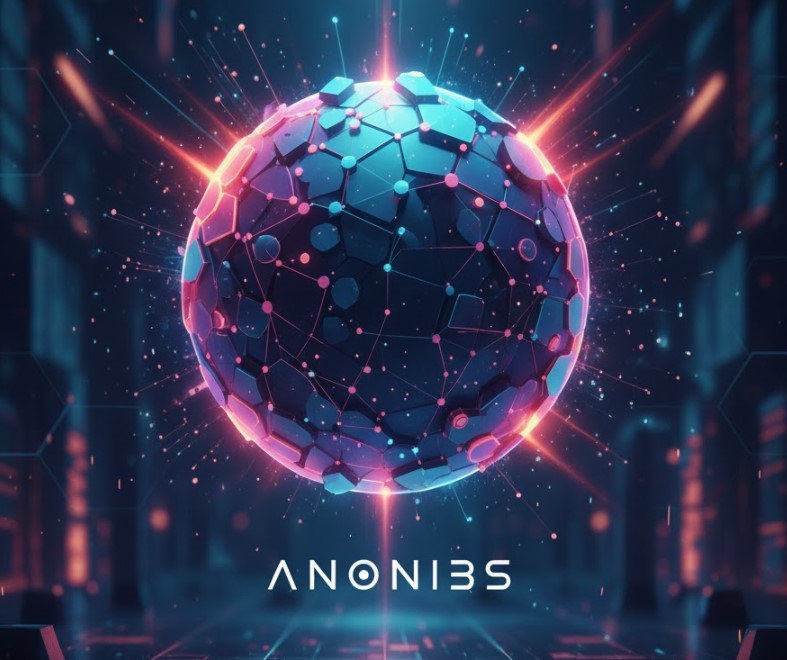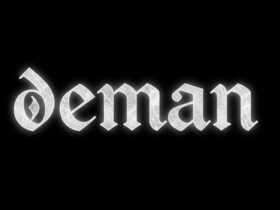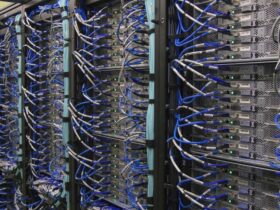In the vast and ever-expanding digital universe, certain corners remain hidden from the public eye, characterized by anonymity, minimal moderation, and uncensored content. One such digital subculture that has grown in prominence is the world of anonibs—anonymous image boards that offer users the freedom to express themselves without the constraints of identity. In this article, we’ll explore what anonibs are, their origins, mechanics, appeal, the risks they pose, and how to engage with them responsibly.
What Are Anonibs and How Did They Arise?
The term anonibs is a portmanteau of “anon,” short for anonymous, and “IB,” which stands for image board. These platforms prioritize user anonymity, allowing individuals to post and share content without revealing their identities. Anonibs emerged from early internet communities that valued freedom of speech and unmoderated content.
The concept of anonymous boards dates back to early online communities like 4chan and 8chan, which operated on the belief that anonymity was key to unfiltered communication. Users were free to post images, texts, or links without the fear of being tracked or identified. Over time, these boards evolved into subcultures, attracting both creative minds and controversial elements. Despite their controversial nature, these platforms have played an important role in shaping internet culture.
Why People Use Anonymous Boards and Their Appeal
The allure of anonibs lies in the anonymity they offer. But what makes these platforms so appealing to users?
Freedom from Identity in Anonibs
One of the most attractive aspects of anonibs is the complete freedom from identity. Unlike social media platforms, where personal branding and identity are integral, anonibs allow individuals to express themselves without fear of judgment or consequences. Whether posting a creative idea, venting frustrations, or sharing personal experiences, users are free to do so without worrying about their reputation.
Creativity and Exploration
Without the constraints of personal branding or the pressure of public opinions, users can freely experiment with new ideas, artwork, or humor. Anonibs serve as digital playgrounds where individuals can post “rough drafts” of creative works without fear of failure or ridicule. The anonymous nature of these platforms fosters experimentation and creativity, allowing for the uncensored sharing of ideas.
Community Without Gatekeepers
Many social media platforms today are governed by algorithms, filters, and gatekeepers who dictate what content gets seen and by whom. In contrast, anonibs embrace an egalitarian approach, allowing anyone to participate without the need for sign-ups or complex algorithms. This creates an open environment where anyone, regardless of status, can contribute, discuss, or simply observe.
Venting, Support, and Unfiltered Speech
Another key draw of anonibs is the ability to share personal stories or vent about difficult situations. For individuals who feel unable to express themselves on more public platforms due to fear of judgment or exposure, anonymous boards provide a refuge. They offer a space for honest dialogue about mental health, relationships, or identity struggles, often without the stigma that can accompany these discussions on social media.
How Anonibs Function: Behind the Scenes
To fully understand anonibs, it’s important to know how they operate. These boards are designed to minimize or eliminate any traces of identity while encouraging free-flowing communication. Here are some of the core mechanics behind these platforms:
Minimal or No Registration
Most anonibs allow users to post without the need for an account or with minimal registration. This absence of a permanent identity means there is little to no traceability, making it easy for users to engage without creating a digital footprint. This design appeals to those who wish to maintain a high level of privacy.
One-Thread/One-Post Format
On traditional image boards, content is organized into threads. A user will post an image or text, and others can respond in kind. The format is simple and intuitive, focusing on conversation and interaction around a specific topic. This system promotes rapid discussions and easy participation, as users don’t need to worry about maintaining an ongoing identity or profile.
Loose or Custom Moderation
Moderation on anonibs can vary widely. Some platforms have clear rules that enforce certain behaviors, while others adopt a more laissez-faire approach, where users have minimal oversight. This means that while some boards maintain a respectful atmosphere, others may descend into chaos. The lack of strong moderation can make these platforms a breeding ground for harmful content, including hate speech or illegal activities.
Ephemeral or Archival Nature
Depending on the board, threads may disappear quickly, creating an ephemeral nature that encourages riskier behavior and impromptu posts. However, some boards archive posts indefinitely, meaning that what is shared could remain visible long after the user has forgotten about it. The temporary nature of some posts can embolden individuals to share more freely, but it also raises questions about long-term privacy and potential repercussions.
Visual Focus
Anonymity on image boards often goes hand-in-hand with a strong visual component. Memes, images, GIFs, and videos dominate the conversation, with many posts relying on visuals to communicate quickly and efficiently. This emphasis on visual communication allows users to express themselves in a way that bypasses some of the traditional constraints found in text-based forums.
The Benefits and Positive Uses of Anonibs
While anonibs are often associated with harmful or problematic content, there are positive uses for these platforms when approached responsibly.
A Safe Space for Honest Expression
For many individuals, anonibs provide a sanctuary where they can express their feelings without fear of judgment. Topics that may be difficult to discuss on mainstream social media platforms—such as mental health struggles or personal trauma—can be shared openly on anonymous boards, often leading to support and understanding from others who have faced similar experiences.
Idea Incubation and Raw Feedback
Creative individuals often use anonibs as a space to test out raw ideas before presenting them to a wider audience. For example, a digital artist might post a rough draft of their work, asking for feedback from anonymous users. This can lead to honest, sometimes brutal, but constructive criticism that helps refine the work.
Privacy-First Culture
In an age where personal data is often exploited for profit, many users appreciate the privacy-first culture of anonibs. These boards resist tracking, branded content, and influencer marketing, which has become pervasive on mainstream platforms. For some, this return to privacy is an important value that underscores their engagement with these communities.
Access for Marginalized Voices
Anonibs have historically offered a platform for individuals who feel excluded from more mainstream spaces. Those who belong to marginalized communities—whether based on gender, race, culture, or identity—can find a refuge in anonymous boards, where there are fewer gatekeepers and less filtering of diverse voices.
The Risks and Dangers of Anonymous Boards
With the freedom of expression that comes with anonibs, there are also significant risks. The absence of identity tracking and moderation makes these platforms susceptible to a variety of dangers.
Harassment, Toxicity, and Lack of Accountability
Anonymity can embolden some individuals to engage in toxic behavior, such as trolling, harassment, or bullying, without fear of reprisal. Because users are not held accountable for their actions, harmful behavior can flourish, creating a hostile environment for others.
Non-Consensual Content and Privacy Violations
Anonibs have been known to host content that violates privacy, including non-consensual sharing of personal images or doxxing. The lack of effective moderation makes it difficult for victims to take action or remove harmful content. This can cause long-term damage to individuals whose personal information is shared without their consent.
Illegal and Harmful Content
Some anon boards are notorious for hosting illegal material, including child exploitation, hate speech, and graphic violence. The anonymity of these platforms makes it harder to track offenders, which can lead to serious legal and ethical implications for both users and platform owners.
Data and Cybersecurity Risks
Despite their focus on anonymity, many anon boards are not immune to data breaches, malware, or other cybersecurity risks. Users who believe they are entirely safe from tracking may still be vulnerable to data leaks or cyber-attacks. It’s essential to be cautious when engaging with these platforms to avoid compromising your personal information.
Ethical Engagement and Responsible Use of Anonymous Boards
If you choose to participate in anonibs, it’s important to approach these platforms ethically and responsibly.
Understand Boundaries and Consent
Even though anonymity may protect your identity, it does not absolve you of ethical responsibilities. Posting someone else’s private images, encouraging harassment, or engaging in illegal activities are still wrong, even if done anonymously.
Protect Your Own Privacy
If you plan on using anonibs, take steps to protect your own privacy. This includes using VPNs, secure browsers, and non-traceable usernames. Avoid sharing personal details that could lead to your identification.
Balance Freedom and Responsibility
While freedom of expression is vital, it’s essential to recognize the limits of responsible behavior. Engage with content thoughtfully, avoiding harmful threads, and always consider the ethical implications of your actions.
Alternatives and Safer Platforms for Anonymous Sharing
If you find the risks of anonibs too great, consider exploring safer alternatives. Platforms that offer moderated anonymity, pseudonymity, or privacy-enhancing tools provide some of the same benefits without the associated dangers.
Conclusion
Anonibs are a fascinating aspect of internet culture, offering both tremendous potential for creative expression and significant risks for those who engage with them. As with any platform, it’s essential to approach anonymous boards with awareness, responsibility, and caution. By understanding the benefits and dangers of these platforms, users can make informed decisions about how and when to participate in them.
FAQs
1. Are anonibs safe to use? While anonibs offer privacy and freedom, they come with risks, such as harassment, privacy violations, and exposure to illegal content. It’s crucial to use them responsibly and protect your own privacy.
2. Can my identity be tracked on anonibs? Although anonibs prioritize anonymity, various tracking technologies—such as IP addresses and browser fingerprinting—can still expose your identity. Always take precautions when using these platforms.
3. How can I stay safe on anonibs? Use privacy tools like VPNs and encrypted browsers, avoid sharing identifiable personal information, and engage thoughtfully with content to protect yourself from harm.
For More Updates Visit: Biomagazine








Leave a Reply